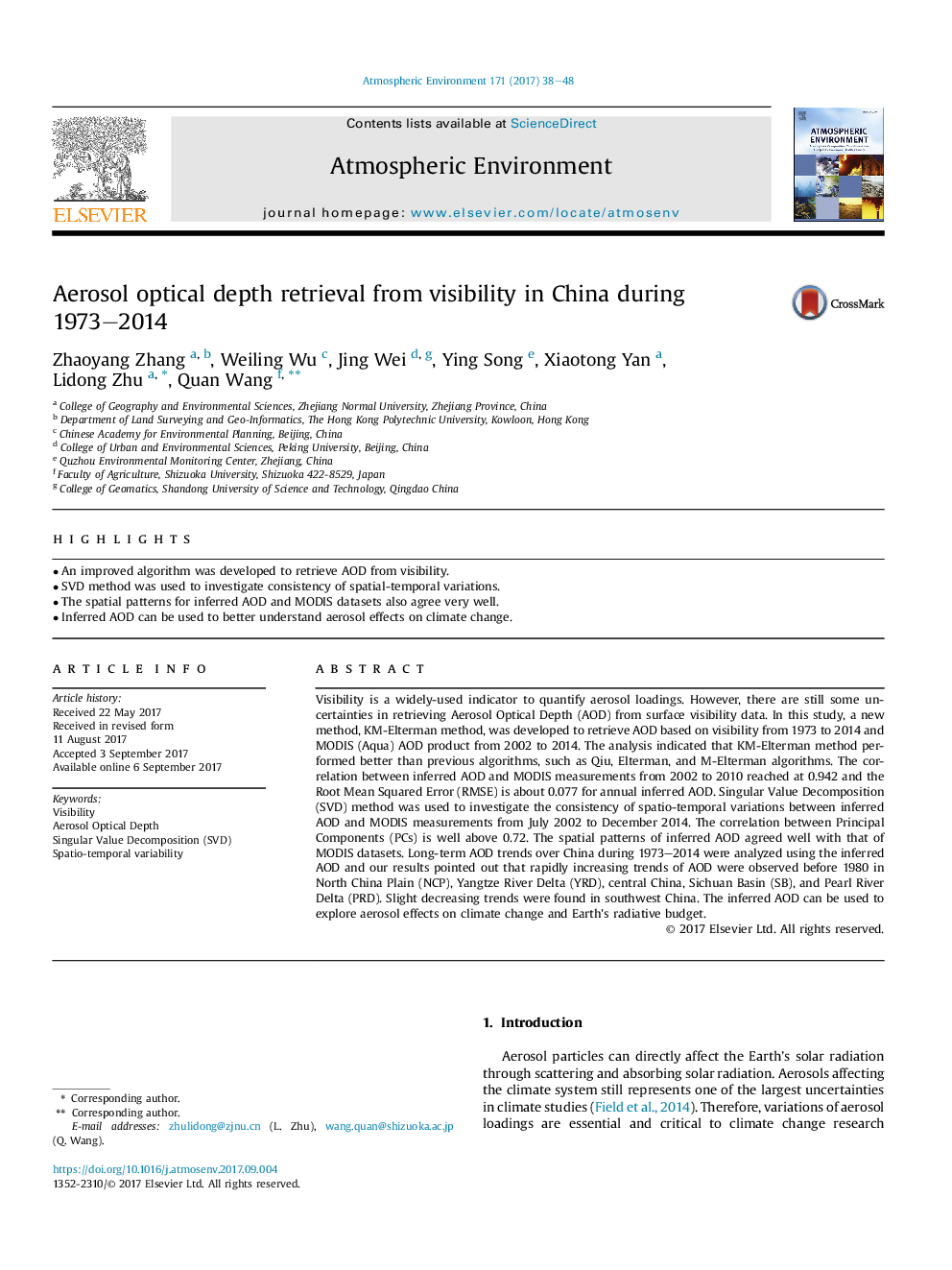| کد مقاله | کد نشریه | سال انتشار | مقاله انگلیسی | نسخه تمام متن |
|---|---|---|---|---|
| 5752762 | 1620303 | 2017 | 11 صفحه PDF | دانلود رایگان |
- An improved algorithm was developed to retrieve AOD from visibility.
- SVD method was used to investigate consistency of spatial-temporal variations.
- The spatial patterns for inferred AOD and MODIS datasets also agree very well.
- Inferred AOD can be used to better understand aerosol effects on climate change.
Visibility is a widely-used indicator to quantify aerosol loadings. However, there are still some uncertainties in retrieving Aerosol Optical Depth (AOD) from surface visibility data. In this study, a new method, KM-Elterman method, was developed to retrieve AOD based on visibility from 1973 to 2014 and MODIS (Aqua) AOD product from 2002 to 2014. The analysis indicated that KM-Elterman method performed better than previous algorithms, such as Qiu, Elterman, and M-Elterman algorithms. The correlation between inferred AOD and MODIS measurements from 2002 to 2010 reached at 0.942 and the Root Mean Squared Error (RMSE) is about 0.077 for annual inferred AOD. Singular Value Decomposition (SVD) method was used to investigate the consistency of spatio-temporal variations between inferred AOD and MODIS measurements from July 2002 to December 2014. The correlation between Principal Components (PCs) is well above 0.72. The spatial patterns of inferred AOD agreed well with that of MODIS datasets. Long-term AOD trends over China during 1973-2014 were analyzed using the inferred AOD and our results pointed out that rapidly increasing trends of AOD were observed before 1980 in North China Plain (NCP), Yangtze River Delta (YRD), central China, Sichuan Basin (SB), and Pearl River Delta (PRD). Slight decreasing trends were found in southwest China. The inferred AOD can be used to explore aerosol effects on climate change and Earth's radiative budget.
Journal: Atmospheric Environment - Volume 171, December 2017, Pages 38-48
